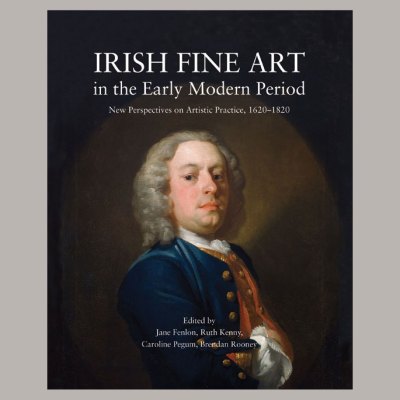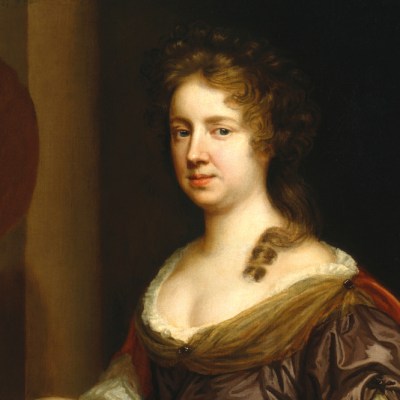From the September 2024 issue of Apollo. Preview and subscribe here.
In 1923, the first retrospective of the work of Sarah Purser was held in Dublin. It had been a long time coming. She was 75 and had been one of Ireland’s most successful portrait painters since the 1880s; even so, she had to arrange the show herself. A century later, the city’s two main galleries are giving Purser – and other women artists – more attention. In October last year the National Gallery of Ireland presented a small selection of her scenes from everyday life, including intimate portraits of friends and family. Now a larger exhibition is taking place at the Hugh Lane Gallery, foregrounding her achievements as an advocate for the arts.
In her mid twenties, after the failure of her father’s flour business, Purser decided to pursue a career as a painter. She seems to have had some formal training in Dublin, where she also started to exhibit and pick up prizes. But since women were barred from taking classes at the Royal Hibernian Academy (RHA), she continued her training abroad: at the age of 30, she followed the well-trodden path to the Académie Julian in Paris, where she studied alongside compatriots such as Josephine Webb, Maria Dorothea Webb and May Manning, and continental artists such as Anna Nordgren, Marie Bashkirtseff and Louise Breslau, who became a lifelong friend. Financial restraints meant that she could stay for only six months. Nevertheless, the period proved transformative in terms of her technique, exposure to the latest trends and access to a supportive international network of women artists.
Man with a Muck Rake (1883), the earliest of her paintings on show and the only landscape, is in the rural naturalist vein then in vogue in France. A sombre palette subtly shifts from brown to green to grey, moving back and up from shore to sea to sky, each portion with variations in brushstroke and texture. In the foreground stands a dark figure gathering seaweed. The circling seagulls are but flecks of white and grey, echoing the lightening sky. There is something deliberately narrow about the scene and its mode of representation, yet there are also distant flickers of sublimity in those few touches of light.
Miss Maud Gonne (1890), Sarah Purser. Photo © Hugh Lane Gallery, Dublin

No less à la mode, though quite different in subject matter, method and effect, is A Lady Holding a Rattle (1885). Swift, sketchy brushstrokes making up a woman’s body give way, towards the top of the canvas, to a more refined head. Piercing blue eyes look beyond the raised rattle, a figure painted blue whose own blue eyes look back at the sitter’s inscrutable face. On top of the woman’s head sits a black bonnet decorated with proud, upward-standing feathers. This is serious fun or perhaps just seriously unfunny.
A later subject piece, which was titled The New Pet (1890) when it was first exhibited, has since been re-catalogued as Miss Maud Gonne, after its model became famous in her own right. It is an opulent affair: a dress lavished with gold-threaded decoration, a ribbon-laden hat, a jewelled hand, heavily carved mahogany furniture, cut flowers in bloom and the luxurious nuts and grapes of still lifes past. Amid such riches its subject cradles a pet monkey. In style it is similar to the sensational portraits that dominated public exhibitions of the period in London and Paris, in which the painter’s virtuosity is very much on show. There is notable wit at work here too, which cuts across what might otherwise be a rather saccharine depiction.
Landscapes and genre paintings were largely put to one side as Purser established herself in the lucrative field of commissioned portraiture. The esteem she won there was marked in 1890 when the RHA elected her as an honorary member – the only form of recognition it afforded to women at the time. The exhibition features a pair of portraits in this more conventional, academic mode, of the banker James Chaigneau Colvill and his wife Helen, painted in 1893. They are a world away from A Lady Holding a Rattle in terms of their patiently finished surface. Nevertheless, they still exhibit much vitality, their sitters’ eyes following the viewer about the room.
The exhibition contains glimpses of where Purser’s talent took her painting across the rest of a long career. A highlight is the Portrait of Kathleen Behan (1923), with its Fauvist palette. However, a fuller sense of her work is somewhat obscured by the exhibition’s focus on the significant role Purser played as a fosterer of art in Ireland. She organised, for instance, a historic joint exhibition of the work of Nathaniel Hone and John Butler Yeats in 1901, to which she invited the dealer Hugh Lane – an exhibition which is credited with leading Lane to found the gallery of modern art in Dublin that is now named after him. That same year Purser was a key figure in the establishment of another institution of Irish cultural revival, the stained-glass studio An Túr Gloine (Tower of Glass). In 1924, she also co-founded the Friends of the National Collections of Ireland, which made many key acquisitions for public collections.
These are all important achievements. But in telling this wider story, the exhibition features works by more than 30 other artists. Some of these help to illuminate Purser herself and her achievements. Mary Swanzy’s portrait of her from around 1926, for instance, is a subtle homage to her friend and mentor’s steeliness. Yet while Purser’s efforts eventually led to the presence of excellent works by Sidney Nolan and Josef Albers in the Hugh Lane Gallery’s collection, it is hard to see how their presence in the exhibition offers much sense of her as an artist. This exhibition has fewer than 20 works by Purser on show, whereas the 1923 retrospective featured nearly 100: perhaps it proved hard to persuade other institutions or private owners to lend work. If the shape of Irish art history is going to be lastingly changed for the better, then the nature and significance of her body of work need to be more fully seen.
Sarah Purser (1926), Mary Swanzy. Photo: Hugh Lane Gallery, Dublin; © The Estate of Mary Swanzy.

‘More Power to You: Sarah Purser – A Force for Irish Art’ is at Hugh Lane Gallery, Dublin, until 5 January 2025.
From the September 2024 issue of Apollo. Preview and subscribe here.



